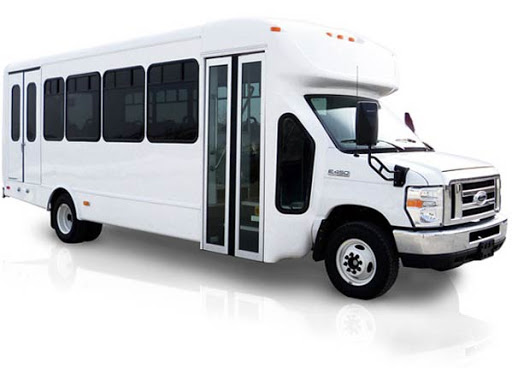
EasyMile and Phoenix Motorcars are working to develop the first autonomous bus that’s Federal Motor Vehicle Safety Standards (FMVSS), Americans with Disabilities Act (ADA), and Buy America-compliant. Once it’s ready, in about a year, the EZ Zeus will become part of Houston METRO’s vehicle fleet, marking a significant step forward in autonomy, capacity, range, speed and durability for driverless public transportation.
Houston METRO received nearly $1.5 million through the Federal Transit Administration (FTA) Accelerating Innovative Mobility (AIM) grant for this deployment, which represents phase two of a four-phase project. The electric bus will transport passengers on both public and private roads, connecting to METRO buses and light rail, to serve Texas Southern University, the University of Houston and Houston’s Third Ward community.
“There’s not currently a shuttle of that size that’s fully autonomous on the market and available for transit agencies to purchase, so this would be the first of its kind,” Houston METRO Chief Innovations Officer Kimberly Williams said. “And the vehicle we’re creating under this grant is fully compliant, so you don’t have to operate off a waiver. It meets all federal requirements for operation on city streets at the speed limits those roads require.”
The first phase
Houston METRO, along with partners First Transit and the Houston-Galveston Area Council, began the first phase of the project in June 2019. During it, a slow-speed EasyMile shuttle transported passengers along Texas Southern University’s Tiger Walk, a one-mile pedestrian loop that connects multiple points and buildings on campus.
Known as the University District Circulator, the shuttle traveled along a pre-programed route with as many as 15 passengers. The testing was scheduled to last a year, but the COVID-19 pandemic closed the university and cut the project a little short, Williams said. Even so, the shuttle completed more than 7,000 successful trips, giving the team insight into how people respond to the vehicle and how to properly implement it into their existing fleet. These trips also gave the community an opportunity to learn about the benefits of shared autonomous public transportation.
The team is expanding the project with phase two, which is where the EZ Zeus comes in. The electric vehicle will connect the university to two Houston METRO services—a heavily used bus line and a light rail line. The University of Houston, which is directly across from the bus and rail lines, will also be on the route.
By the end of the project, the goal is to completely connect all of Houston METRO’s transit services in the Third Ward, a Houston Complete Community where the focus is on providing underserved citizens with access to quality services and amenities.
“The Third Ward has high transit usage and a great need for transit modes,” Williams said. “So, we’re excited to have a project in a Complete Community. We think it reflects on other communities we’ll be operating in. We want to make sure people see this technology as being available to all.”
The vehicle
The EZ Zeus will be a Class 4 medium-duty zero-emission shuttle with Level 4 autonomy. Phoenix Motorcars will integrate EasyMile’s technology into a proven Ford E-450 electric chassis, Sales Manager Thomas Allen said.
“We’re taking a unique technology and advanced electric conversion and putting it on a proven product,” EasyMile Senior Vice President Sharad Agarawal said. “We’re not looking at a whole bunch of unknowns. It’s a vehicle that drivers are used to seeing. And all the functionality will be there so it can be driven in manual mode or on autonomous routes.”
The EZ Zeus will carry 12 to 23 passengers and will be able to sustain heavy mileage, Agarawal said. It will be capable of running 24 hours a day and will take longer trips and reach higher speeds than the smaller shuttles currently being tested in short distance, high density areas.
“This will create a new autonomous shuttle that is larger and higher speed than what we used in phase one, giving us more flexibility as we move to mixed traffic and more complicated operation,” Williams said. “It can operate like any other vehicle, so it gives us more flexibility on the routing.”
Moving public transit forward
The team will use the first year of testing to determine if the vehicle performs to expectations, to further educate the community about this mode of transportation, and to get feedback. Ultimately, they want to know how the technology can be incorporated into the Houston METRO fleet to provide a safe, convenient public transit option that reduces travel time and eases congestion.
As part of the grant, Houston METRO will share the data collected with other transit agencies, Williams said.
“The goal,” she said, “is to basically be that accelerator proving ground where information is shared throughout to benefit not just the Houston region, but the industry as a whole.”

